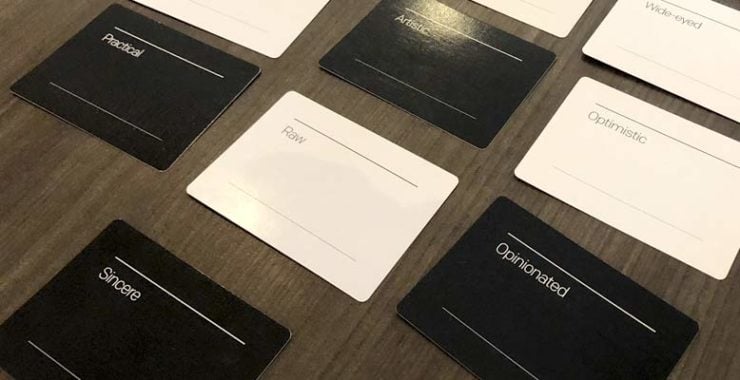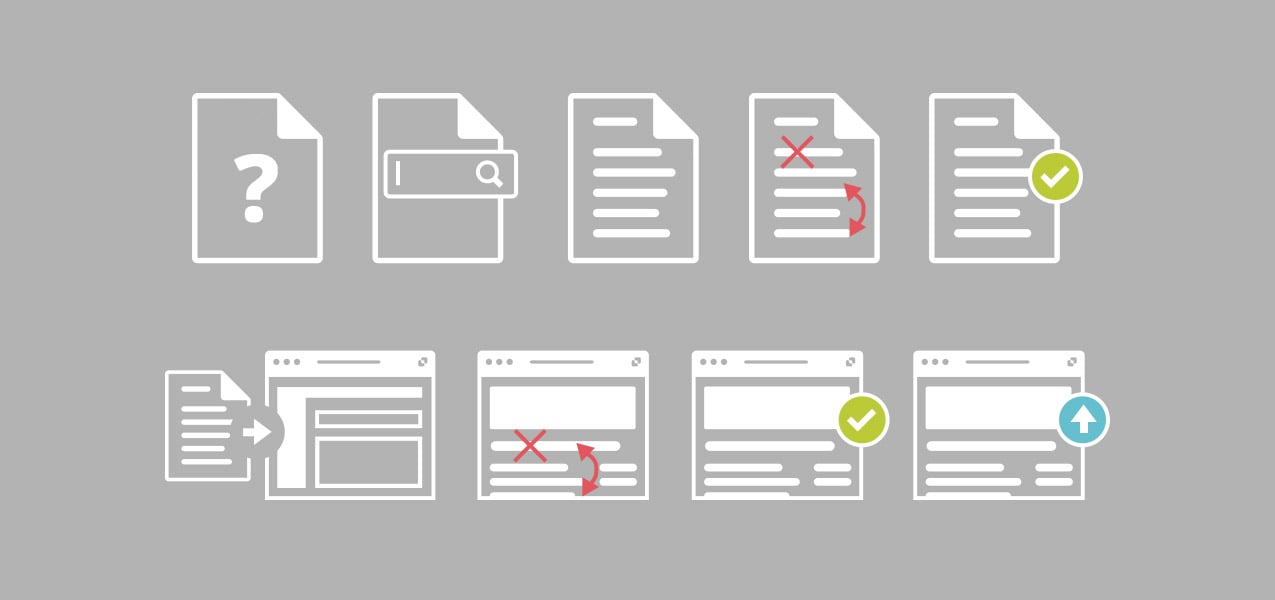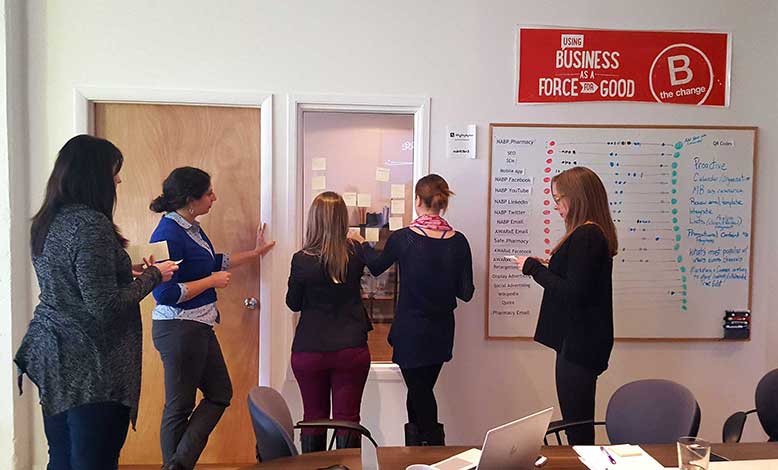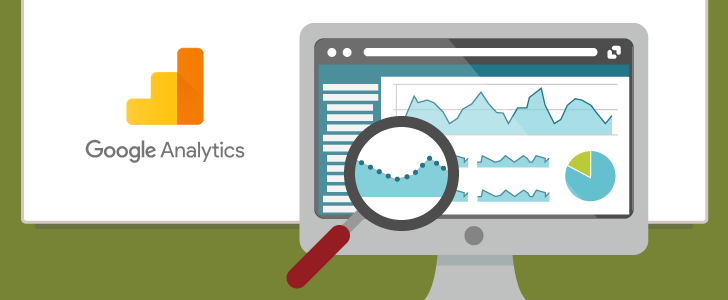How to Create a Sustainable Content Strategy
From stakeholder research to data, analytics, and impact measurement, many components go into creating a sustainable content strategy. In this post, we’ll help you cut through the noise to create a plan that produces great results over time while helping you build capacity and minimize adverse impacts.
Good content can be one of your organization’s strongest business assets. However, content marketers also note significant industry challenges. According to the Content Marketing Institute:
- 58% of B2B marketers say their strategy is just ‘moderately effective’.
- Nearly half of those say they lack clear content strategy goals.
- Only one in three marketers have scalable content creation models.
- The biggest challenge is lack of resources to successfully execute content strategy tasks.
In order to build trust and see results from content strategy, you need to provide well-written content based on your expertise and experience that addresses people’s specific pain points and answers their questions. A great content strategy can help you do this.
However, a more sustainable content strategy also prioritizes good governance practices to improve efficiency and define (or redefine) success over time. Sustainable content strategy also requires that we align content with sustainability goals. It requires us to enlist systems thinking and ask ourselves big picture questions alongside those that are specific to target customers.
Moreover, in the face of an AI-flooded market, how can we ensure our content provides value and isn’t marked as spam? Below, we outline several important steps to implementing a more sustainable content strategy.
A content marketer wants lots of visits, and we want those visitors to stay as long as possible. We want low bounce rates and long visits. Those are considered success metrics. But in the long run, we need to think about the desired outcome for us and for our visitors, and look for ways to meet those goals as efficiently as possible.
— Andy Crestodina in Designing for Sustainability: A Guide to Building Greener Digital Products and Services
What Makes a Content Strategy ‘Sustainable’?
The internet has a massive environmental impact. Trillions of outdated, underperforming, or otherwise irrelevant posts clutter the web, wasting energy and driving up emissions. Plus, many organizations don’t implement effective data disposal strategies, leaving legacy websites, spreadsheets, and other artifacts online long after they’ve outlived their usefulness.
To improve sustainability—and better support readers—our content must be authoritative, timely, relevant, efficient, measurable, and aligned with specific impact and business goals that help stakeholders meet their needs—a tall order to fill!
No Strategy Without Good Governance
Plus, it’s not enough to create a good content strategy if you can’t effectively maintain it over time. Meaningful content governance supports improved sustainability. Good governance helps you build capacity and prepare for the future while remaining flexible enough to shift your focus as you learn new things. This applies to team dynamics, scalability, and many other issues that arise as you execute a long-term content strategy.
Putting systems and resources in place that allow you to execute and measure content marketing efforts over time can help you improve sustainability. This will also enable you to focus on continuous improvement, allowing you to do more of what works and less of what doesn’t.
Steps to a Sustainable Content Strategy
Every organization is unique. However, below are nine steps that have helped our clients design impactful content strategies that stand the test of time. Need help? Download our content strategy worksheet at the end of this post.

1. Define Your Audience
The first question to answer is: who are you trying to reach? To identify your audience’s needs and pain points as accurately as possible, start with stakeholder, market, or user research.
It might also be helpful to conduct a persona workshop. However, keep in mind that persona exercises can alienate or otherwise neglect important stakeholders through unconscious bias and by focusing on demographics and behaviors versus specific motivations.
To improve inclusivity, stakeholder mapping can not only help you better understand the players in your broader business ecosystem, but also help you apply systems thinking to your overall content strategy. This is key for sustainability.
The big picture questions: Who are you trying to reach with your content? How do they engage with content? Are there additional stakeholders you might not have considered?
2. Clearly State Your Goals
Next, content strategy helps organizations achieve business goals while also answering key customer questions. To achieve this, create consensus on how you might meet these core goals:
- What business goals are you trying to reach? Be specific.
- Which problems are you trying to solve? How are customers and other stakeholders impacted by these problems?
- What does success look like in a month? Six months? A year or more?
- Which key performance indicators will you need to measure this success?
- How might we align content strategy goals with broader organizational sustainability goals?
- How might we use content to provide customer support, as with a knowledge base or community forum?
- Are there areas where content could support stakeholders beyond marketing or customer support? If so, what might those be?
Answering questions about how to align business goals with people’s needs guides an impactful content strategy. In our experience, this is best accomplished through a content strategy workshop with key stakeholders attending.
The big picture question: How might you find synergy between your organization’s mission, sustainability goals, desired outcomes, and the content you want to produce?
3. Where Will Your Content Live?
There are many ways to publish content. Each platform has strengths and weaknesses. Take time to identify your audience’s most commonly used communication channels. What do they use each channel for? Consider their customer journey not only during the buying process but throughout their relationship with your organization.
For example, YouTube might be great if your audience prefers video. If they would rather read, perhaps a blog on your website or a Medium publication would serve you better. Pick the communication channels that make it easy for you to find and engage with target users. Ask yourself:
- Is my website the best place to publish content? If so, is it powered by a green web host that uses renewable energy?
- What role might social media or other platforms play?
- Could syndication help me reach a wider audience?
- If so, what are the sustainability implications of that?
- How will I manage publishing across multiple channels to align with both marketing and sustainability goals?
The big picture question: Which platforms give you the highest probability to solve someone’s problem?

4. Define Editorial Standards
How will you communicate with your audience in ways they understand and relate to? Put it in concrete terms by creating editorial guidelines your entire organization can follow:
- How formal will you be?
- Will you use an academic or casual voice? If the former, how might that alienate potential readers?
- What is your inclusive language policy?
- Will you use contractions, semicolons, or the Oxford comma?
- What is grammatically appropriate (or inappropriate)?
Be as specific as possible so you can maintain consistency across all communication channels. Most importantly, be sure to include accessibility and sustainability as part of these efforts.
The big picture question: What is the professional standard your content should be held to?
5. Define Visual Standards
Similar to editorial standards, visual standards are also a vital part of any content strategy:
- How will you use visuals to make your stories more easily understandable?
- Will you use photographs, illustrations, videos? or all of the above? If the latter, how will you do so responsibly?
- Does your team have the skills to optimize photos and media content so assets download quickly across devices and platforms and for users on older devices and in low-bandwidth areas?
- Do they also know how to maintain accessibility standards over time?
- Finally, how will you tie your content strategy to overall visual brand standards to ensure consistency?
The big picture question: How will you keep your content visually appealing, accessible, and optimized for speedy delivery over any connection?

6. Detail Content Workflows
Many content marketers underestimate the time and resources it will take to create, publish, and measure content. If you think through the process of bringing your content to life, it probably entails many more steps than you might think.
Define and document a step-by-step content workflow and involve your team in its creation. Answering these questions ahead of time will save time, energy, and money down the line.
- From conception to publication and distribution, whose hands will each post pass through?
- Whose approvals are needed?
- How will content be formatted and distributed in a way that is inclusive and accessible?
- Will you use structured data to support your content? If so, how will this affect your process?
- Are you trying to rank in search engines? If so, how will this change your process?
- Have you defined page weight budgets to improve performance and achieve good digital carbon ratings?
- How will you measure success? (See #8 below.)
- Are there ways to make any processes described above more efficient?
Whether you’re a content team of one or many, creating consensus on publishing workflows is critical to good content governance.
Using AI for content is like using a Ferrari where you only need a golf cart. Sure, it’s cool and powerful, but it’s entirely unnecessary and probably wrecks some things along the way.
— Alisa Bonsignore, Sustainable Content: How to Measure and Mitigate the Carbon Footprint of Digital Data
Also: Define the Role of AI in Content Workflows
Generative AI tools are all the rage with many marketers. However, the ethics and sustainability challenges associated with these tools are significant enough that countries around the world regularly create new laws for their governance. This could put your organization at risk.
To support a more sustainable content strategy, organizations must define how Gen-AI might improve content workflow efficiency, then craft ethical AI policies to help team members understand the implications of its use.
The big picture question: How might you make content workflows easy to follow, easy to execute, and ethically sound?

7. Define a Distribution Strategy
You will need to distribute content across the channels defined earlier to reach and engage your audience in meaningful ways. Some questions to consider:
- Which channels are most effective to help you reach your audience?
- Will you pay for promotional posts?
- Will you create an email newsletter?
- What role does earned media play in your content, SEO, and link-building strategy?
- How might user interactions such as comments, mentions, reshares, etc. impact your potential reach?
- How often will you share new content or reshare existing content?
- Can content partnerships or syndication strategies help you reach a more qualified audience?
- Are you using social media to distribute content? If so, what challenges might this and other distribution platforms present?
- Can a content calendar help you balance content goals with capacity and resources?
- Most importantly, what’s your monthly budget for these efforts? Do you have the capacity to execute your distribution strategy?
Defining good practices around post frequency and traffic generation will be vital to your success. As your content strategy evolves, distribution methods will change. Make sure you can adjust accordingly.
The big picture question: What are the best ways to ensure our content reaches those we’re trying to help?

8. Get Specific About Measuring Success
You’ll need a clear way to measure progress. Otherwise, how will you know if your content strategy contributes to your enduring success? How will you understand whether your content meets both marketing and sustainability goals? This is key to implementing a strategy you can improve upon over time:
- What are the marketing metrics that really matter to your organization?
- Which criteria will help you measure content performance: clicks, views, signups, purchases, donations, or other interactions? What tools will you use to measure success?
- Do your measurement strategies support a more sustainable data strategy? Do they promote data inequality?
- Similarly, do content measurement efforts support good data privacy practices? Are you receiving informed consent?
- How will you take into account your content’s environmental impact? Can you align your digital strategy with an impactful climate strategy that helps you estimate digital emissions?
- When should we schedule regular team content check-ins to track progress and identify hurdles?
- Most importantly, how often should you conduct content audits to prune or improve underperforming or outdated content?
By periodically revisiting content strategy performance, you can realign or pivot your strategy quickly to stay focused on continuous improvement and efficiency.
The big picture questions: What result would make your content campaign successful? How do you measure that?
9. Define Content Topics and Clusters
Finally, once you have a clear framework with which to execute your content strategy, gather your team and define the content topics and clusters you plan to create. Be sure to:
- Define topics based on clear audience pain points.
- Cluster content topics based on themes, keyword groups, known search intent, and other variables, making sure to define pillar cornerstone posts and the subtopics that will support them.
- Align your content strategy with specific sustainability goals to help create shared value through content. This will also help you tell a better sustainability story.
- Finally, are there potential pitfalls, like greenwashing or other traps, that you haven’t considered?
The big picture question: How will you balance content topics that are meaningful to both your users and your business goals with ongoing performance and sustainability efforts?
Sometime in the not-too-distant future, sustainability won’t be a standalone department; it will be an integrated part of what happens at every level from accounting to logistics. This is something that has tentacles that reach into every aspect of business. What else is at the center of business? Content. It’s a smart career move to get ahead of the curve and understand what’s coming.
— Alisa Bonsignore, Sustainable Content: How to Measure and Mitigate the Carbon Footprint of Digital Data
Create Your Own Sustainable Content Strategy
A sustainable content strategy uses the least amount of material resources to meet business goals and user needs. Impactful content strategy also evolves over time based on continuous measurement and improvement. Incidentally, this is also key to designing a more sustainable website too.
Hopefully, the steps above give you some good ideas for how this might apply to your own content marketing efforts. Still have questions? We’re always happy to chat. Feel free to reach out.
Download Our Content Strategy Worksheet
We created a short worksheet based on the process above. It can help you and your team jumpstart content strategy efforts or refresh an existing strategy.
Use it in a workshop or as a standalone exercise to create a roadmap for continued success. Just fill out the form below and we’ll send it over. Thanks!
Note: This post was originally published in 2014 and has been significantly updated to match current content strategy practices.